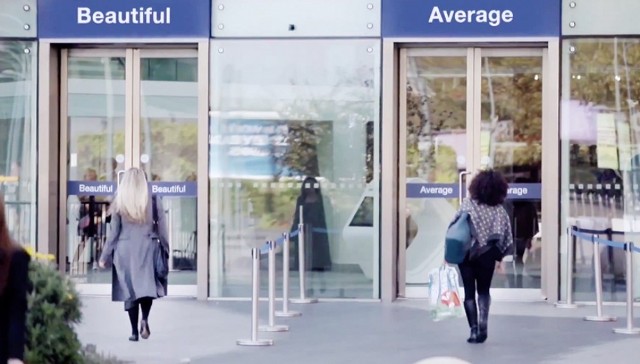feminist friendly: the power of femvertising
Apparently the age-old adage of ‘sex sells’ is no longer quite right. Nowadays, gender sells, with feminism increasingly being used as a marketing tool. The merging of feminism and advertising has been called “femvertising”.
Women as a consumer group are a $14 trillion market globally, and this number is expected to rise in the future.
Media brand SheKnows found that 94% of women believe that portraying women as sex symbols in advertisements is harmful. They also found that 51% of women like femvertising as they believe these advertisements break down gender-equality barriers. Over half of women polled said they have bought a product because they liked how the brand and their advertising portray women.
Dove’s most recent campaign, #ChooseBeautiful, has gone viral since it was launched mid-April. The advertisement, or as Dove calls it, “film”, since it isn’t specifically advertising a product, has been viewed over six million times on YouTube. The video has been labelled as ‘empowering’ by Cosmo and ‘powerful’ by Yahoo.
The premise of the campaign is that there are two doors: an “average” door and a “beautiful” door. Women from San Francisco, Shanghai, Delhi, London and São Paolo are shown choosing which door to enter through and thus showing the world how they perceive themselves.
Dove may be encouraging women to claim the word “beautiful”, but the binary of classifying women as either “beautiful” or “average” remains unhelpful, reducing women’s value to their looks. This is so even when women are encouraged to determine their own measure of beauty. And it is worth noting that all of the women depicted were femme-presenting.
I couldn’t help but giggle at the beginning of the Choose Beautiful ad/film/uplifting montage, that the construction workers erecting the ‘beautiful’ and ‘average’ signs in different languages were all (you guessed it) men. Dove presents a world where women can own their beauty but can’t lift heavy signs – like, really?
Arwa Mahdawi, a commentator on the advertising industry for The Guardian makes an important point about femvertising:
‘Ads can be entertaining, they can be thought-provoking, they can be inspiring. But, please, let’s not call them empowering. They come with an agenda and that agenda is to sell you a product. So, sorry to break it to everyone, but your Deep Moisture Nourishing Body Wash doesn’t really care about you or your self-esteem. And your cucumber and green tea deodorant doesn’t give a damn about nurturing your confidence. Ultimately the aim of campaigns like this is not for you to choose beautiful, it’s for you to choose Dove.’
While Pantene conveys a part of our culture that needs addressing (this message is especially confronting when a woman apologises to her partner for passing their child to him) we can’t forget that this has been made purely for profit.
‘Inauthentic support cheapens the idea of women’s equality, and that is dangerous not only for the purveyors of business behind those token messages, but to the feminist movement itself. Too many attempts to “market to women” seem to me to turn female power into a commodity – or at least, reduces female power into something mostly good for buying more commodities.’
It’s also worth noting that while feminism is being used to sell products, these companies are also exploiting gender as a way of driving up the prices of things like deodorant and shampoo.
Gendered pricing, or the woman tax, means that women pay an average of $1,351 more annually in the US. The results of this study prompted California to ban gendered pricing in 1996. The results are similar in the UK, where women’s products are priced up to 75% more despite having the same ingredients.
The ABC’s The Checkout found that this trend is reflected in Australia. A body glide anti-chafe balm is 57% more expensive if you buy the pink version.
Shaving cream is 7% more expensive, styling powder is 29% more and eye gel is 17% more if you buy products “for women.”
The messages spouted in femverstising are aimed at women changing self-defeating behaviour rather than targeting men’s oppressive behaviour. Companies like Dove and Pantene build women up but are careful to claim a feminist message that will not alienate men. I would be much more accepting of femvertising if brands were to speak on issues of domestic violence or wage inequality. Personally, I would rather feel safe moving through public spaces than to #ChooseBeautiful.
So while advertising campaigns like Dove’s #ChooseBeautiful are preferable to commercials that show busy mums adoring washing powder or women playing rugby in tiny outfits, we still need to remember that femvertising is not here for women, it exists for women’s dollars.


